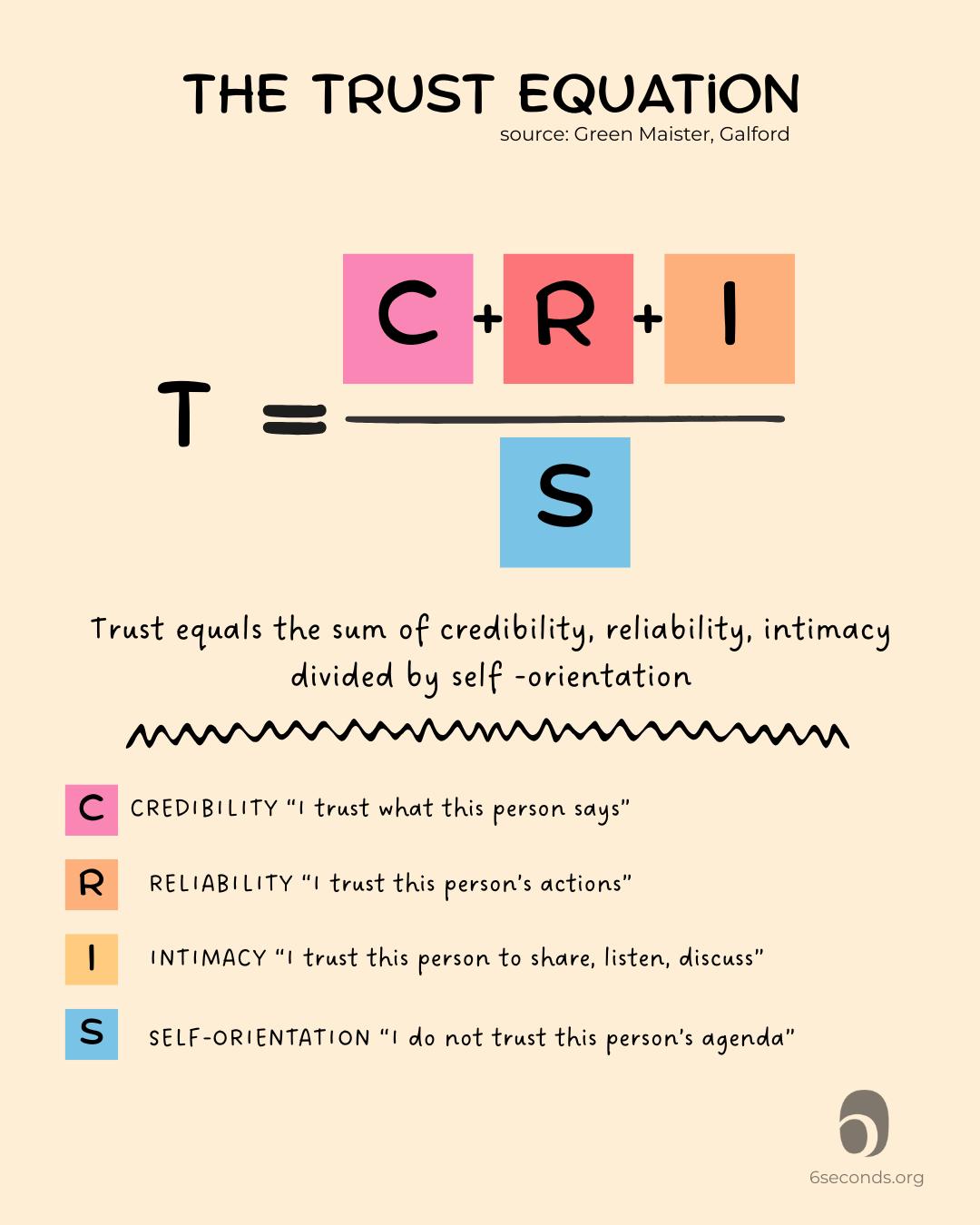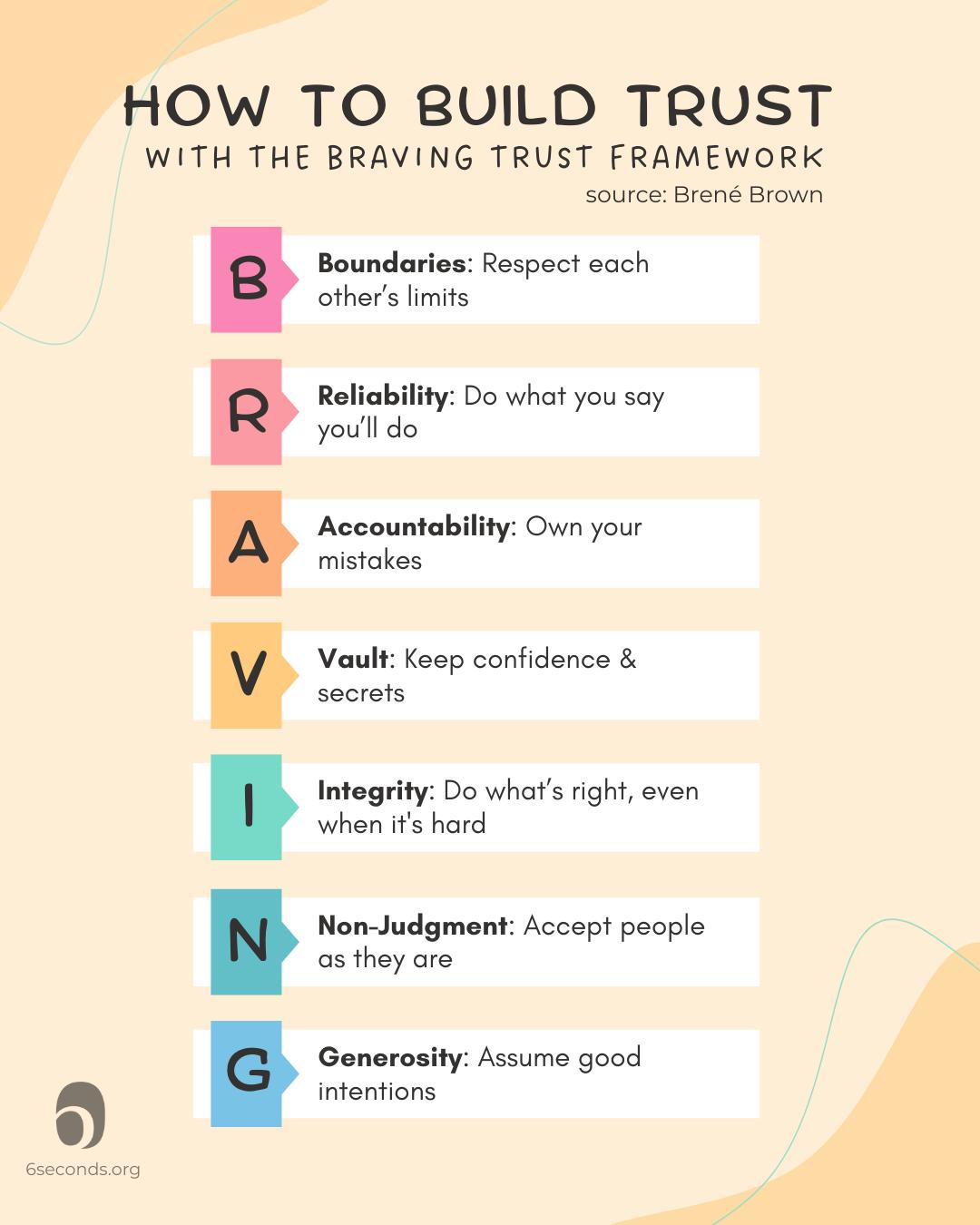Trust: How It’s Built, Broken, and Repaired
Trust is the foundation of strong relationships, organizational cultures, and global economies, but it’s more fragile than we realize. Research shows that while trust takes time to develop, it can be lost in an instant. So how do we rebuild it when it’s damaged?
by Patty Freedman

Trust is an essential tool for people’s thoughts, feelings, and actions. We use the word “trust” to:
- Interpret and evaluate what people say
- Describe behaviors
- Decide if we feel comfortable sharing information
- Indicate whether we feel other people have our interests at heart
Trust in Decline Globally
The 2025 Edelman Trust Barometer reveals a significant decline in global trust levels. Since 2020, trust in key institutions—government, business, NGOs, and media—has experienced a notable decrease. In 2020, the global Trust Index stood at 56%, but by 2025, it had fallen to 50%, indicating a six-percentage-point decline over five years.
This erosion of trust has profound implications. The 2025 report highlights a strong correlation between trust levels and societal optimism. In countries where trust in institutions is higher, citizens exhibit greater optimism about their future. Conversely, in nations with diminished trust, there’s a pervasive sense of pessimism regarding economic prospects and overall well-being.
As trust in institutions declines, individuals must become more intentional about fostering trust in their personal and professional relationships. This requires understanding the fundamental components of trust and how they influence decision-making, collaboration, and long-term success.
Understanding the Trust Equation
The Trust Equation introduced by Maister, Green, and Galford, explains that trust is built on four key factors: credibility (do people believe what you say?), reliability (do you follow through?), and intimacy (do people feel safe with you?). But trust falls apart if self-interest is too high—when someone seems more focused on themselves than others. The more you show honesty, consistency, and care while keeping your self-interest in check, the stronger trust becomes.
Trust Equation:
Trustworthiness=Credibility+Reliability+Intimacy/Self-Orientation
In this model, a high degree of credibility, reliability, and intimacy enhances trustworthiness, while a high level of self-orientation diminishes it.
Understanding the mechanisms that build trust at an individual level provides insight into how trust functions within teams and organizations. When trust is present in workplace cultures, performance and employee engagement flourish.

Trust as a Catalyst for Organizational Performance
In organizational contexts, trust is more than a formula; it’s a critical driver of performance, employee retention, and workplace culture. In his Harvard Business Review article, Paul J. Zak, a pioneer in neuroeconomics, demonstrates that high-trust workplaces experience:
- 74% less stress: Employees in high-trust environments report significantly lower stress levels.
- 106% more energy at work: Trust fosters a more energetic and dynamic workforce.
- 50% higher productivity: Trust correlates with increased efficiency and output.
- 13% fewer sick days: Employees are healthier and take fewer sick leaves.
- 76% more engagement: A trusting environment leads to higher employee engagement.
- 29% more satisfaction with their lives: Trust at work contributes to overall life satisfaction.
These findings highlight that trust is not just a “nice to have” but a fundamental component of a thriving organization.
Ready to build a high trust organization?
Just fill in this form and one of our team members will be with you shortly:
Centering Trust in Organizational Success
The Six Seconds Vital Signs™ (VS) model further emphasizes the centrality of trust in achieving organizational excellence. The VS Model identifies five key drivers of organizational performance:
- Trust: The foundation that enables open communication and collaboration.
- Motivation: The drive that propels individuals to achieve goals.
- Change: The adaptability to navigate and embrace transformations.
- Teamwork: The synergy that arises from effective collaboration.
- Execution: The ability to implement plans effectively.
Among these, trust is at the center. Without it, motivation wanes, change is resisted, teamwork falters, and execution suffers. In Six Seconds’ Vitality research, these five drivers predict 66% of the variation of leadership performance scores. Leaders aiming to cultivate high-performing workplace cultures should prioritize building and maintaining trust. As Joshua Freedman, CEO of Six Seconds, states “Trust is the foundation of effective collaboration; without it, the other drivers of performance crumble.”
Building trust in organizations is not a passive process—it requires active engagement, accountability, and a commitment to long-term relationship-building.
“Trust is the foundation of effective collaboration; without it, the other drivers of performance crumble.”
How to rebuild trust over time and through actions
Rebuilding trust, once broken, is hard—but not impossible. Many people think that apologies or reassurances can fix broken trust. But trust isn’t about words; it’s about consistent, reliable actions over time.
Brené Brown explains that trust is built in small moments—what she calls the “marble jar” effect. In her model, every action—keeping confidences, showing up when it matters, following through on promises—add marbles to the jar. But betrayal, dishonesty, and unreliability, can empty it. This is why trust is built in small steps but can be broken easily.

Brown divides trust into specific behaviors in her BRAVING model, which serves as a framework for building, maintaining, and restoring trust. Each letter in BRAVING represents a key part of trust:
- Boundaries – Respecting and honoring personal and professional limits. People trust those who set and respect boundaries.
- Reliability – Doing what you say you’ll do, again and again. Trust grows when actions match words over time.
- Accountability – Owning mistakes, apologizing when necessary, and making amends. People lose trust when others deflect blame.
- Vault – Keeping confidences. Trust is broken when people share what isn’t theirs to share.
- Integrity – Choosing courage over comfort, and doing the right thing even when it’s difficult.
- Non-Judgment – Creating a space where people feel safe to be vulnerable without fear of criticism.
- Generosity – Assuming the best in others instead of jumping to negative conclusions.
Rebuilding Trust When It’s Broken
When trust has been damaged, restoring it requires more than good intentions, promises, or assurances—it requires repeated, deliberate actions over time. Want to rebuild or strengthen trust in your workplace or relationships? Try these simple actions:
✔ Be Consistent – Small, reliable actions over time matter more than grand gestures.
✔ Listen Deeply – Give full attention, ask open-ended questions, and reflect what you hear.
✔ Own Your Mistakes – Acknowledge when trust has been broken and take responsibility.
✔ Set Clear Expectations – Trust grows when people know what to expect from you.
✔ Show Competence & Care – Trust happens when people feel you are both capable and genuinely have their best interests in mind.
Trust is a long game. It doesn’t return overnight, but with intentionality, accountability, and repeated trustworthy behavior, it can be rebuilt—one action at a time.

For more articles, I recommend:
- Anticipation is Joy in Advance - September 8, 2025
- Be Unapologetically You: The Emotional Intelligence Skills for Speaking Up - August 18, 2025
- 6 Ways Emotional Intelligence Makes Decision Making Easier - July 16, 2025
